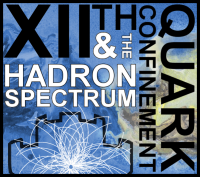Speaker
Description
Recent advances in experiments of the symmetry energy of nuclear matter and in neutron star observations yield important new insights on the equation of state of neutron matter at nuclear densities. In this regime the equation of state of neutron matter plays a critical role in determining the mass-radius relationship for neutron stars. We show how microscopic calculations of neutron matter, based on realistic two- and three-nucleon forces that reproduce very accurately properties of light nuclei, make clear predictions for the relation between the isospin-asymmetry energy of nuclear matter and its density dependence, and the mass and radius for a neutron star.
On the other side, several microscopic calculations suggested that the inclusion of hyperons softens the equation of state such that the corresponding maximum mass of neutron stars is much lower that astrophysical observations. This fact is particularly evident in non-relativistic calculations. We show that small changes in the nucleon-nucleon-Lambda interactions have a dramatic role to the equation of state, while Lambda binding energies in hypernuclei are qualitatively insensitive to the same adjustments. These results suggest that current experimental constraints are perhaps not sufficient to find a solution to the so called 'hyperon puzzle'.
